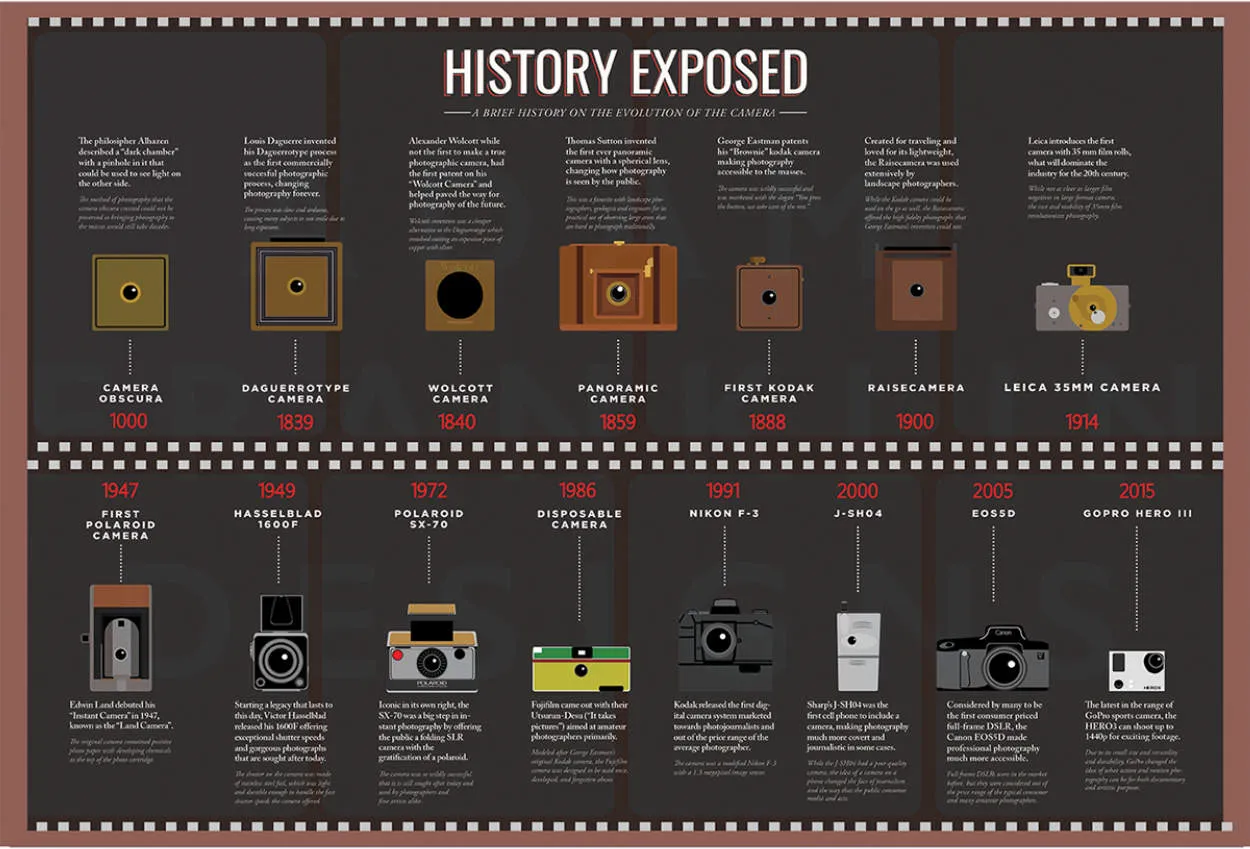The Evolution of Digital Cameras in the USA
A Brief History: From Early Digital Cameras to the Present
The evolution of digital cameras in the USA has seen remarkable progress. From the early days of bulky and low-resolution cameras to the sleek and advanced devices available today, the journey has been truly astounding.
In the late 1980s, the first digital cameras were introduced to the market. These cameras were large and expensive, primarily used by professional photographers and enthusiasts. They offered low-resolution images and had limited storage capabilities.
However, with advancements in technology and the increasing demand for digital photography, manufacturers started developing more compact and affordable cameras. This led to the launch of consumer-grade digital cameras in the mid-1990s, making them more accessible to the general public.
Throughout the 2000s, digital cameras witnessed significant improvements. Megapixel counts increased, allowing for higher-resolution images. Manufacturers introduced innovative features such as optical zoom, image stabilization, and faster autofocus systems.
In recent years, digital cameras have become more versatile, offering options for both professional photographers and everyday users. The rise of mirrorless cameras has revolutionized the industry with their lightweight design and high-quality image output. Additionally, smartphone cameras have become increasingly sophisticated, allowing users to capture professional-grade photos with ease.
Looking ahead, the future of digital cameras holds even more exciting possibilities. Advancements in image sensors, artificial intelligence, and connectivity will continue to enhance the photographic experience, enabling users to capture breathtaking moments with remarkable convenience.
Technological Milestones: Advancements that Shaped the American Camera Industry
The Evolution of Digital Cameras in the USA has been driven by various technological milestones that have revolutionized the American camera industry. These advancements have significantly impacted the way cameras are designed, manufactured, and used, transforming the landscape of photography.
One of the most significant milestones in the American camera industry was the introduction of the first consumer digital camera in 1975. Developed by Eastman Kodak Company, the prototype camera captured images with a resolution of 0.01 megapixels, paving the way for the future development of digital photography.
In the late 1990s, the advent of the first digital single-lens reflex (DSLR) cameras changed the game for professional photographers. These cameras combined the benefits of digital technology with the versatility and control offered by traditional SLR cameras, attracting a new wave of enthusiasts and professionals.
Another key milestone in the evolution of digital cameras was the introduction of compact point-and-shoot cameras with integrated digital sensors. These cameras allowed consumers to capture high-quality images without the need for interchangeable lenses or complex settings, making photography more accessible to the masses.
In recent years, mirrorless cameras have been on the rise, offering advanced technology in a compact form factor. These cameras utilize electronic viewfinders and omit the traditional mirror system, resulting in significantly smaller and lighter bodies. Mirrorless technology has gained popularity among both professionals and hobbyists.
The American camera industry has also seen advancements in image sensor technology, with the introduction of higher resolution sensors, improved low-light performance, and enhanced dynamic range. These advancements have greatly contributed to the overall image quality and capabilities of digital cameras.
Furthermore, advancements in connectivity have enabled seamless integration between cameras and other devices. Wi-Fi and Bluetooth capabilities allow for quick and easy sharing of images, remote control functionality, and direct printing, enhancing the overall user experience.
In conclusion, the American camera industry has experienced significant technological milestones that have shaped the evolution of digital cameras. These advancements have made photography more accessible, versatile, and efficient. As technology continues to advance, we can expect further innovations that will push the boundaries of what is possible in the world of photography.
The Rise of Smartphone Photography and Its Impact on the Digital Camera Market
The evolution of digital cameras in the USA has been greatly influenced by the rise of smartphone photography. In recent years, smartphones have become increasingly equipped with advanced camera technology, allowing users to capture high-quality photos and videos without the need for a separate digital camera.
This shift in consumer behavior has had a significant impact on the digital camera market. Sales of traditional digital cameras have declined, as more and more people rely on their smartphones for photography. The convenience and portability of smartphones, combined with their continuous technological advancements, have made them the preferred choice for capturing everyday moments.
Additionally, smartphone photography has also led to the emergence of a vibrant online community of photography enthusiasts. Social media platforms like Instagram have become hubs for sharing and discovering stunning smartphone snapshots. This has revolutionized the way people consume and engage with photography, further diminishing the demand for standalone digital cameras.
As a result, camera manufacturers have been forced to adapt to this changing landscape. Some companies have pivoted towards producing high-end professional cameras, catering to a niche market of photography enthusiasts and professionals who demand advanced features and superior image quality. Others have shifted their focus towards developing smartphone camera technology, partnering with smartphone manufacturers to enhance camera capabilities.
In conclusion, the rise of smartphone photography has disrupted the digital camera market in the USA. As smartphones continue to improve their camera capabilities, traditional digital cameras are facing increasing competition. However, the evolving market presents opportunities for camera manufacturers to innovate and adapt to the changing needs and preferences of consumers.
Current Trends and Future Predictions in the USA’s Camera Industry
The camera industry in the USA has witnessed significant evolution and advancements over the years. With the rise of digital technology, the traditional film cameras have been largely replaced by digital cameras, which offer users a wide range of features and convenience.
One of the current trends in the USA’s camera industry is the increasing popularity of mirrorless cameras. These cameras are smaller and lighter compared to their DSLR counterparts, making them more portable and convenient for photography enthusiasts. Mirrorless cameras also provide excellent image quality and advanced features, such as high-speed continuous shooting and 4K video recording.
Another trend in the camera industry is the integration of smartphone technology. Many smartphones now come equipped with high-quality cameras that rival the capabilities of standalone digital cameras. This has led to a decline in the sales of compact point-and-shoot cameras, as consumers opt for the convenience of having a camera built into their smartphones.
The future of the camera industry in the USA holds exciting possibilities. One prediction is the continued development of artificial intelligence (AI) technology in cameras. AI-powered cameras can automatically adjust settings based on the scene and subject, making photography more accessible to beginners. Additionally, AI algorithms can enhance image quality and offer unique features like object recognition and advanced autofocus.
Another future prediction is the growth of virtual reality (VR) and augmented reality (AR) in the camera industry. Cameras capable of capturing immersive VR and AR content are expected to become more prevalent. These cameras will enable users to capture and experience moments in a completely immersive and interactive way.
In conclusion, the USA’s camera industry is evolving with current trends such as the rise of mirrorless cameras and the integration of smartphone technology. Looking ahead, advancements in AI technology and the emergence of VR and AR are expected to shape the future of cameras, offering users more exciting and innovative possibilities.
Conclusion
The evolution of digital cameras in the USA has revolutionized the way we capture and share moments. From the introduction of the first digital camera to the advancements in technology, photography has become more accessible to everyone. With the convenience of smartphones, social media, and editing software, the digital camera industry continues to thrive, offering endless possibilities for photography enthusiasts.




